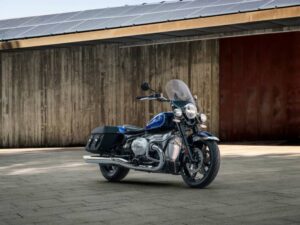2024 Acura Integra Type S: Same Punch, More Polish

We’re on record as being huge fans of the Honda Civic Type R. The Type R helped put the Civic onto our 10Best list. It also topped the Toyota GR Corolla and the Volkswagen Golf R in our GRRR hot-hatch comparo, and by no small margin. And who among us could forget its standout Lightning Lap performance, wherein it became the event’s all-time fastest front-driver and the first of that species to break the three-minute mark?
As quick and rewarding as the Type R is on circuit and canyon road alike, it’s not perfect. The 2024 Acura Integra Type S, on the other hand, just might be. It retains all the performance-driving goodness of the Type R, but neatly rounds off many of its daily-driving rough edges. Its main drawback is the $51,995 price, which outpaces the 2023 Type R by some $7105. The figure makes more sense when you realize that Acura thinks you’ll cross-shop it with the Audi S3, the BMW M235i xDrive Gran Coupe, and the Mercedes-AMG CLA35—and maybe you will—but those cars are all-wheel drive and, crucially, lack a manual-gearbox option.
Shared Elements
Chucking the new Integra Type S between the guardrails along Highway 39 in California, we immediately see that this machine has the same sharp steering, deft handling, and colossal grip as its shoutier Honda sibling. The Acura’s turbocharged 2.0-liter engine has been recalibrated to deliver 320 horsepower and a smidge more part-throttle midrange torque. Reaching peak horsepower requires 93 octane, and on the local 91-octane California brew, we can’t point to any difference—which is no bad thing. The Integra still pulls mightily out of corners, with the Type R’s helical limited-slip front differential and clever dual-axis strut front suspension absolving the Type S powertrain of any of the usual high-horsepower front-wheel-drive sins.
The thankfully mandatory six-speed manual gearbox feels as surgical and precise as ever, but Acura has made one change we fully support. The Type R’s metal shift knob, which can get hot enough to cauterize your fingerprints in summer or freeze-burn them in winter, has been replaced with a tactilely satisfying leather-sleeved upgrade. The shift diagram is still engraved metal, so you could brand your palm if you shift like an ape, and determined masochists can opt for a dealer-installed all-metal titanium substitute. Consequently, wounded Type R owners can now visit an Acura parts counter for relief.
Much of the Type S’s dynamic goodness derives from the shared platform using the same floorpan, firewall, and suspension hard points. The suspension itself and the adaptive dampers are also identical from a hardware standpoint. All the various links and bushings are shared, and the springs and anti-roll-bar specs are samesies too. In addition, you get the same 265/30ZR-19 Michelin Pilot Sport 4S summer tires and boffo brakes featuring four-pot Brembo front calipers and two-piece ventilated rotors. After all of this, it should go without saying that both cars share a 107.7-inch wheelbase and broad front and rear track widths of 64.0 and 63.5 inches, respectively.
Key Differences
But there are differences, and they account for much of the edge smoothing we hinted at earlier. For those who wondered what a Type R with a few dozen extra pounds of sound insulation would be like, the Integra Type S provides an answer. Acura claims that this Integra’s weight is 36 pounds heavier than a Type R. The Integra has more floor and firewall insulation, though those materials don’t account for the entire difference. The Integra body is made up of different stampings and has better strength and noise-attenuating characteristics.
What’s more, the software controlling the adaptive dampers has been tweaked. An Acura suspension-development engineer tells us the Integra is programmed with less rebound damping, and it feels like it. In fact, Sport+ might now be the ticket at Lightning Lap, something our man Tony Quiroga opted against when he set the quick time in the Type R. The electric power-steering assist maps have also been retuned, and while response is still razor sharp in all three drive modes, Comfort’s effort levels are now a tad lighter than we prefer.
The combined effect of all of this is a more fluid and settled daily driver. The Type S doesn’t feel like it’s being chained down against its will to suffer the roughest bits of tarmac with dampers unable to catch their breath and return to center. And despite the identical footwear, less tire noise finds your ears. Sport and Sport+ are not out of the question on broken pavement, although the Comfort damper setting is still plenty compelling—so long as you customize the Individual mode to dial up the steering effort.
Part of the Plan
Chief engineer Masashi Iwai laid bare the philosophical differences between the two cars, and his explanation snaps everything we’d seen and felt into focus. Essentially, the Civic Type R was conceived with time-attack events and track days in mind. It’s meant to be able to kick ass at Lightning Lap; R is for Racetrack. The Integra Type S, on the other hand, was optimized around the idea of sporty street driving. The translation isn’t as graceful, but S is for Street Sports, or something.
Given that vision, other Type S differences start to make sense. Compared with the Type R, it flies under the radar (gun), with a small lip spoiler instead of a stand-up wing (the carbon extension on our sample car is $950 dealer-installed option) and more cleanly integrated (but no less voluminous) air intakes for the radiators, intercooler, and brake cooling ductwork.
Inside, the perforated seats are slightly less aggressive but no less grippy, but they do lose their shoulder-harness holes. The driver gets a 12-way power-adjustable seat, and both front chairs are heated. They sit slightly higher too, and while the resulting minor reduction in front headroom might be less helmet-friendly for very tall drivers, there’s still plenty of it. What’s more, red with black isn’t the sole interior theme—Ebony and Orchid with black are available too.
On top of that, the LogR data logger is absent, and the stability control lacks competition and fully defeatable settings. The Type S does get a standard 16-speaker ELS Studio premium audio system, and it sounds fantastic. But that’s not the only good noise, because the Type S has a modified exhaust that lacks the Type R’s front resonator. The result is a deeper and less kazoo-like tone that’s quieter in the Comfort engine mode, but one that growls, spits, and pops in Sport+ in a rowdier way the Type R can’t match. The reason? Honda’s Type R is sold across the globe, and some markets get touchy about such things. Acura’s Type S is destined only for North America.
The Honda Civic Type R is an absolute blast that we love to death. But the Acura Integra Type S gives the same thrills to nearly the same degree in a more grown-up package that we could live with for the long haul.
Arrow pointing downArrow pointing down
Specifications
Specifications
2024 Acura Integra Type S
Vehicle Type: front-engine, front-wheel-drive, 4-passenger, 4-door hatchback
PRICE
Base: $51,995
ENGINE
turbocharged and intercooled 16-valve inline-4, aluminum block and head, direct fuel injection
Displacement: 122 in3, 1996 cm3
Power: 320 hp @ 6500 rpm
Torque: 310 lb-ft @ 2600 rpm
TRANSMISSION
6-speed manual
DIMENSIONS
Wheelbase: 107.7 in
Length: 186.0 in
Width: 74.8 in
Height: 55.4 in
Passenger Volume, F/R: 54/43 ft3
Cargo Volume: 24 ft3
Curb Weight (C/D est): 3250 lb
PERFORMANCE (C/D EST)
60 mph: 5.0 sec
100 mph: 11.7 sec
1/4-Mile: 13.5 sec
Top Speed: 167 mph
EPA FUEL ECONOMY
Combined/City/Highway: 24/21/28 mpg
Technical Editor
Dan Edmunds was born into the world of automobiles, but not how you might think. His father was a retired racing driver who opened Autoresearch, a race-car-building shop, where Dan cut his teeth as a metal fabricator. Engineering school followed, then SCCA Showroom Stock racing, and that combination landed him suspension development jobs at two different automakers. His writing career began when he was picked up by Edmunds.com (no relation) to build a testing department.





